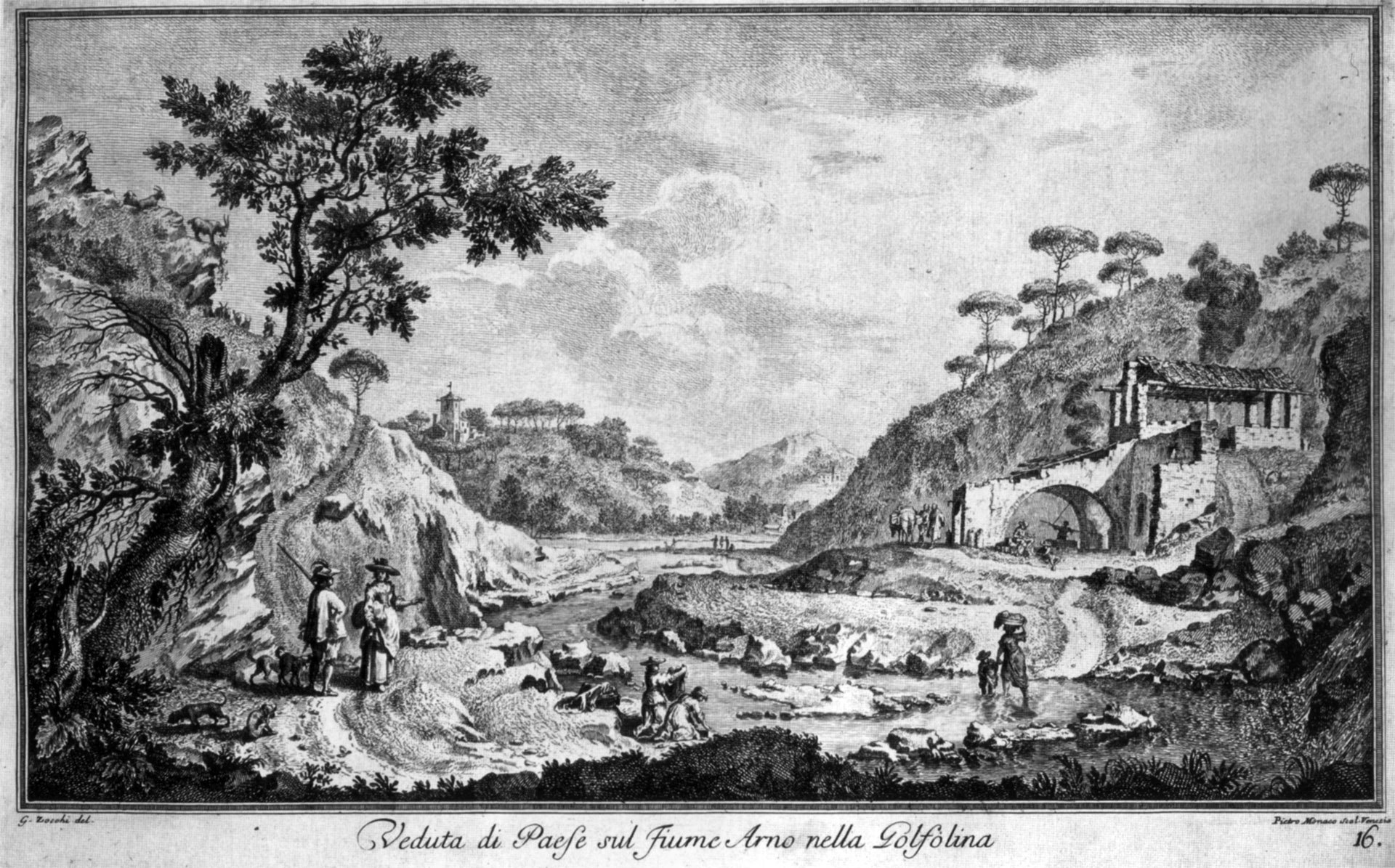The Gonfolina Stone
"La Gonfolina, Sasso per antico unito co' Monte Albano in forma d'altissimo argine il quale tenea ingorgato tal fiume in modo che prima che versassi nel mare era dopo a' piedi di tal Sasso, componea due grandi laghi de' quali el primo è là dove oggi si vede finire la città di Firenze insieme con Prato e Pistoia" (from the Vernacular, meaning: The Gonfolina, a Stone in ancient times joined to Monte Albano, in the form of a very high river bank that kept this river blocked at the foot of the Stone, before flowing into the sea, creating two large lakes, the first of which is where the city of Florence ends along with Prato and Pistoia).
Leonardo da Vinci
Along an old road that runs beside the Arno river, from Florence to Empoli, there is a "natural monument" considered one of the oldest in the world. It is linked to the legend of the birth of Florence and the story of Noah, of whom the Florentines are said to be the direct descendants...
The origin of this legend dates back to the Medici period, during the Renaissance, when numerous Alexandrian, Greek and Eastern texts began to circulate in the city.
It was Berossus the Chaldaean, Priest of the Babylonian supreme God Bel (Marduk) in Babel, who lived between the 3rd and 4th century BC, who, in his texts, told the story of Babylonian history from its origins to the great flood. The origin of the legend, made known by Annio da Viterbo, emerged here, telling us that Noah had stopped in the land of Etruria and that Hercules, his descendant, had had a son, Thuscus, giving Tuscany its name.
The Council for the reunification of the Churches of the West and the East held in Florence contributed to the spread of the legend, because on that occasion, eight hundred people poured into the city, including mathematicians, theologians, astronomers, astrologers, doctors, writers and scholars from every corner of the world.
The ancient foundation of Florence then moved on to the reclamation of the basin of a lake and to the "flowing" of the Arno river, for which the ancient boulder of the Gonfolina stone had to be cut.
Stories handed down tell us that no stonemason ever managed to cut into the boulder, apparently made of an alloy harder than steel, so much so that not even the Germans managed to blow it up with powerful explosives during the Second World War.
Paying a visit to the Boulder of the Gonfolina, with its legend and history, is worthwhile, also to see the place where it is said that the Ghibelline Castruccio Castracani wanted to close the Arno river in order to flood Florence.



